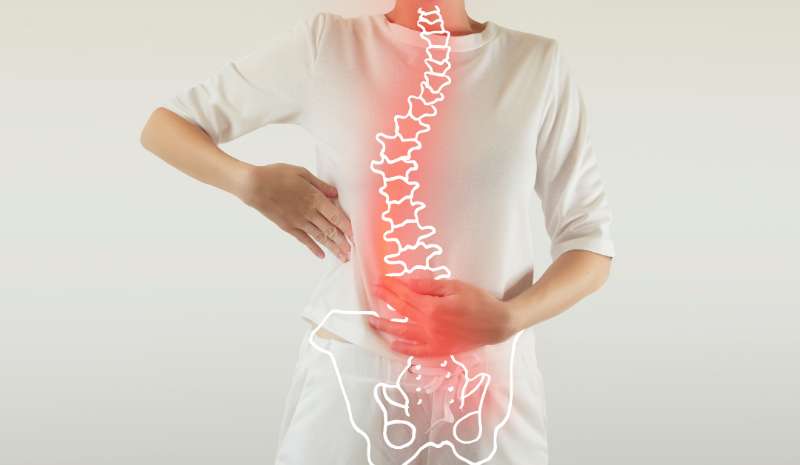Maintaining good posture isn't just about looking confident; it's essential for our overall health and well-being. When we neglect our posture, it can lead to a variety of physical problems, including chronic pain, headaches, and mobility issues. In this article, we'll explore how poor posture affects our bodies and how to correct it to prevent long-term health problems.
Understanding Posture and Its Importance
Good posture refers to how we align our bodies while standing, sitting, and moving. It involves keeping the spine in a neutral position where the muscles, ligaments, and joints are working efficiently and in harmony. Poor posture, on the other hand, means our spine is misaligned, leading to strain on muscles and joints.
What is Good Posture?
Good posture is when your head, shoulders, spine, and hips align in a way that distributes your body weight evenly. Whether you're standing, sitting, or sleeping, maintaining this balance helps avoid unnecessary strain on muscles and joints. The key is to keep your body aligned in a way that promotes comfort and reduces stress on your body’s structures.
Common Posture Problems
Some of the most common posture problems include:
Forward head posture: This happens when the head protrudes forward from the neck, often due to excessive use of technology.
Rounded shoulders: This occurs when the shoulders curve forward, commonly caused by sitting hunched over a desk.
Slouching: This is when the back becomes curved, often seen when sitting for long periods without support.
How Poor Posture Leads to Chronic Pain
When we ignore the importance of maintaining proper posture, it can result in a wide range of musculoskeletal problems. Let's break down how poor posture can lead to chronic pain, particularly in the back, neck, and joints.
Back and Neck Pain
The most common consequence of poor posture is back and neck pain. When the spine is not properly aligned, it creates stress on the muscles and ligaments in the back and neck. Over time, this can lead to chronic discomfort or even injury. For example, slouching can strain the lower back muscles, while forward head posture can cause neck pain.
The Role of Muscle Imbalance
When you maintain poor posture for extended periods, certain muscles become overworked while others weaken. For instance, when you slouch, your chest muscles tighten, while the muscles in your back become overstretched and weak. This imbalance can result in muscle pain and discomfort, which may persist if not addressed.
Joint Dysfunction and Poor Posture
Improper alignment can also affect your joints. When your body is out of alignment, certain joints, especially in the spine, can experience added pressure. This can lead to joint dysfunction, causing pain and stiffness. For example, misalignment of the spine can compress the nerves, leading to shooting pains or numbness, particularly in the neck, back, and arms.
Posture-Related Headaches
Another major problem associated with poor posture is the development of headaches. Many people don't realise that the way they hold their neck and spine can directly impact the occurrence of headaches.
How Posture Affects the Spine and Nervous System
The spine houses the nervous system, which sends signals to different parts of the body. Poor posture can interfere with these signals, leading to tension in the neck and head. When the spine is out of alignment, muscles in the neck and shoulders tense up, potentially triggering headaches.
The Link Between Neck Posture and Tension Headaches
One of the primary types of headaches linked to posture is tension headaches. These often occur when the neck muscles are strained due to poor posture, such as when looking down at a screen for long periods or slouching in a chair. The muscles in the neck become tight, which can lead to pain at the base of the skull and throughout the head.
Posture and Mobility Issues
Over time, poor posture can also affect your mobility. When your body is misaligned, it may become more difficult to move freely, leading to stiffness and decreased flexibility.
Impact on Flexibility and Movement
Poor posture can reduce the range of motion in your joints. For example, if you have rounded shoulders or a forward head posture, you may experience limited movement in your neck and shoulders. This lack of mobility can make everyday tasks, such as lifting objects or turning your head, more challenging.
Chronic Posture Problems and Long-Term Effects
If poor posture persists over time, it can lead to long-term mobility issues. The spine and joints may become permanently misaligned, causing ongoing discomfort and difficulty moving. In severe cases, chronic posture problems can contribute to the development of conditions like arthritis, which further limit mobility.
How to Correct Poor Posture
The good news is that poor posture can be corrected with the right exercises, stretches, and professional care. Let's explore some ways to improve posture and prevent the problems associated with it.
Exercises and Stretches to Improve Posture
Certain exercises can help strengthen the muscles that support proper posture. For example, exercises that target the back, shoulders, and core muscles can help you maintain a neutral spine. Stretches for the chest and hip flexors can relieve tightness and improve flexibility.
Chiropractic Care and Posture Correction
Chiropractic care is another effective way to address posture problems. Chiropractors can adjust the spine to realign the body and reduce pain. They can also provide advice on posture correction and exercises to prevent future issues.
Conclusion
In conclusion, poor posture can have significant consequences for our health, leading to chronic pain, headaches, and mobility issues. By understanding the impact of bad posture and taking steps to correct it, we can prevent these problems from becoming long-term. Incorporating posture-friendly habits, such as strengthening exercises and regular chiropractic care, can go a long way in improving your health and overall quality of life.



































